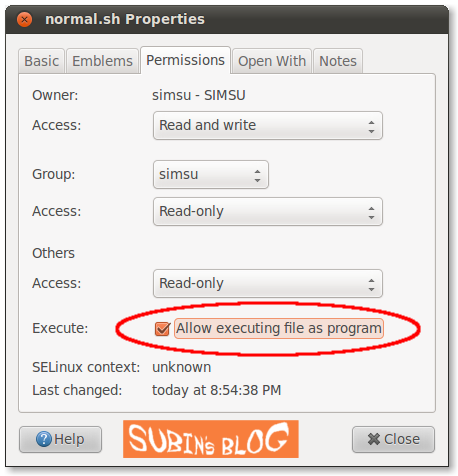
cd - That ~ to the left of the prompt represents your home directory (that’s /home/you), which is the terminal’s default directory.To work with files and directories, you will need to know a few basic commands: If you specify a path to a file that does not exist, nano (and many other programs) will create a new, blank file at that location and open it.
#Exe on linux full#
If you wanted to open a document located in another directory, you’d need to specify the full path to the file - for example, nano /home/chris/Documents/document1.

The command nano document1 tells nano to launch and open the file named document1 from the current directory. For example, nano is an easy-to-use terminal text editor. The shell looks in the current directory unless you specify another directory.
#Exe on linux how to#
You can also refine your guesses with the aid of the tab completion trick below.įor more in-depth instructions, read How to Install Programs in Ubuntu in the Command-Line. You would just need to know the package names of your favorite programs, and you can guess them fairly easily. If you just installed Ubuntu and wanted to install all your favorite software, you could do it with a single command like the above one. Sudo apt-get install chromium-browser pidgin For example, to install the Chromium web browser and Pidgin instant messenger, you could execute this command: However, you can also specify multiple packages as arguments. The apt-get program reads the arguments install packagename and installs a package named packagename. The above line launches sudo, which asks for your password before launching apt-get with root (administrator) privileges. This may seem a bit complicated, but it’s working just like the Firefox command above.
#Exe on linux software#
On Ubuntu (other distributions have their own package management systems), the command to install a new software package is: You even even install multiple applications with a single command. Instead of clicking around and selecting applications one-by-one, you can install them with a terminal command.

Software management applications like the Ubuntu Software Center are fancy frontends to the few terminal commands they use in the background. One of the most efficient things to do from the terminal is install software.

Other commands you would run in the terminal function just like Firefox, except many run only in the terminal and don’t open any sort of graphical application window. To launch Firefox and open How-to Geek, you could run the following command: For example, Firefox accepts web addresses as arguments. The types of arguments you can use depends on the program. Terminal commands can also accept arguments.


 0 kommentar(er)
0 kommentar(er)
